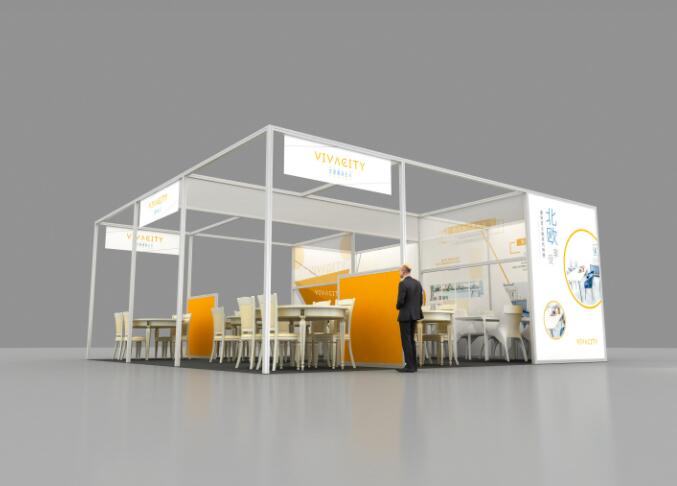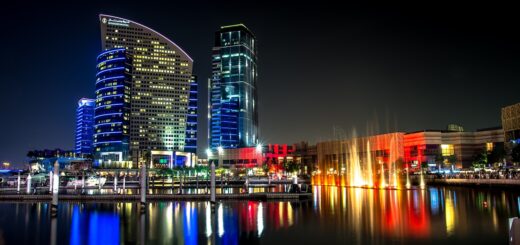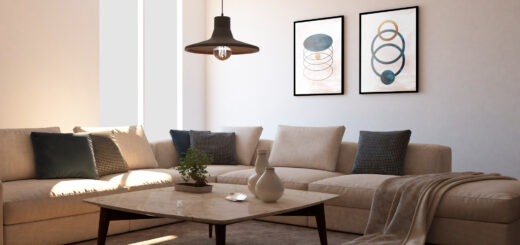What are the different types of booths?
The booth is a display space for exhibitors to arrange themselves in the exhibition. It provides a suitable environment and place for exhibit exhibition, corporate publicity, product demonstration, information dissemination, economic and trade negotiation, etc. The first impression of the audience on the exhibitors comes from the booth, so the booth design and construction should be unique and eye-catching when expressing the corporate image, and try to impress the exhibitors as much as possible.

According to the booth location, the booth types can generally be divided into Corner Booths, Cross-Aisle, In-Line or Linear Booth, Island Booths, Peninsula Booths, Perimeter Booths, etc., different booth types have different advantages and disadvantages and layout methods and requirements.
- Corner Booths
Exposure is a huge aspect of how well your booth performs at an event, and corner booths will optimize yours by being present in two separate aisles at once. Generate twice the amount of foot traffic and utilize the full opportunity of the space by maximizing the face time your displays have with the passing audience. This increases the chances of catching the eyes of someone passing the booth, and also creates a more open and navigable area where people will feel more comfortable browsing the exhibit. However, these booths come at a premium, but depending on the importance of your company’s performance at the next trade show, this might completely justify the upcharge. - Cross-Aisle
Cross-aisles are exhibit aisles that run perpendicular to the main aisles of the show floor, and the cross-aisle booths are then positioned at the intersection point of these walkways. To be considered a cross-aisle booth, you need to purchase both exhibits on either side of the aisle. These are high-demand booths as a result of being located in a high-traffic area. More often than not the option for a overhead cross-aisle header is available. This allows you to display your company name across a banner sign at a different height than the rest of the companies in the surrounding area. Attendees can then observe where you’re located well before they approach the booth. Some trade shows offer inline cross-aisle booths, while others require that companies buy island and peninsula booths. If island and peninsula exhibit spaces are the only option then the price will be must greater, because of the larger amount of space that you would occupy on the event floor. However the greater cost comes with the privilege of having one of the most sought after spots at the event. - In-Line or Linear Booth
These are the basic packages of booths available at most trade shows. In-line or linear booths are positioned with booths on either side of their exhibit in an aisle, making these the most challenging to differentiate yourself from those exhibitors around you. Companies can try to maximize exposure by picking in-line booths near the hot spots of the event, but you should also invest a significant amount of time to drawing in traffic through digital channels to boost the foot traffic in front of your linear booth. - Island Booths
These are the “creme de la creme” of booths. As the name suggests, they are displays that stand on their own and have aisles on all four sides of their exhibit. Island booths allow you to have much more freedom and opportunity to embellish your wide open space. This setup makes it easier to engage with attendees for longer amounts of time because you get to own that entire presence without the distraction of next-door neighboring exhibitors. Consider a co-marketing opportunity with a partner where you could split the cost of an island booth and decrease the cost by half. This collaboration is also very beneficial if you’re serious about growing a line of business with a complementary partner. The obvious negative to these types of booths is the price range for most businesses, so if cost is a worry than islands may not be your first choice to exhibit. - Peninsula Booths
The peninsula booths are positioned on three aisles, and have a booths backed up on their last side. Given the booths significant exposure, you should expect to receive a significantly higher amount of traffic and opportunities to engage with passing attendees. Peninsulas typically offer more space, and exhibitors even take advantage of it by building multi-story structures for attendees to tour on the expo floor. On average, they’re usually three to four times the square footage of a standard booth, which allows your marketing team to spread their creative wings to design the open space. This extra freedom provides a greater opportunity to set yourself apart from the other exhibitors. Much like the island, peninsula booths will charge you a premium. - Perimeter Booths
These are the booths that are backed up against a structural wall in the convention center. They don’t offer as much space as the luxury island or peninsula booth, but many times the height restrictions for perimeter booths are much higher than in the center which allows you to have a taller reach and presence on the floor. Furthermore, being against a wall or at the end of a major aisle often leads the crowd towards your booth without the attendee even realizing their course. The entire time they’re walking down the aisle, whether they know it or not, they can see your booth in their peripheral vision. Naturally they will continue to walk down that path until they reach the end in most instances, which increase the odds that they will engage the booth to hear more about your product.
Exhibitors’ participation in exhibition activities is a part of corporate marketing, and it is also a good opportunity for them to establish and promote their image. Therefore, after we have a deep understanding of the customer’s corporate culture concept and product situation, we must summarize the essence of the corporate brand image and transform it into a spatially appropriate treatment.



